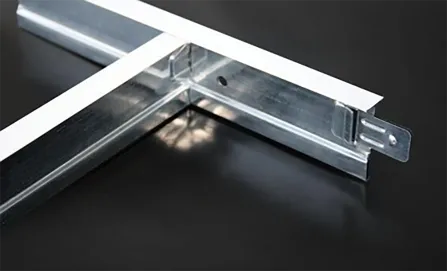Dec . 09, 2024 14:37 Back to list
large ceiling access panel
Understanding Large Ceiling Access Panels Their Importance and Applications
In modern construction and facility management, access panels play a critical role in ensuring the functionality and efficiency of buildings. Among these, large ceiling access panels are particularly valuable due to their capacity to provide unobstructed access to vital infrastructure concealed above ceilings. This article explores the significance, applications, and selection criteria for large ceiling access panels.
What Are Large Ceiling Access Panels?
Large ceiling access panels are removable sections in ceilings that allow maintenance workers, technicians, and engineers to access and service hidden systems such as HVAC, plumbing, electrical wiring, and insulation. These panels vary in size to accommodate different access needs, with larger panels facilitating entry to expansive and complex systems. Constructed using materials such as metal, plastic, or drywall, access panels can be designed to blend seamlessly with the ceiling while also allowing for easy removal when necessary.
Importance of Large Ceiling Access Panels
The primary purpose of large ceiling access panels is to provide safe and efficient access to critical building systems. Regular maintenance and inspections are essential for the longevity and reliability of HVAC and electrical systems. Without appropriate access, these tasks could become cumbersome and time-consuming, potentially leading to service disruptions.
Moreover, large access panels enhance safety. By offering a designated entry point, they reduce the risk of damage to ceilings and surrounding infrastructure during maintenance operations. Additionally, these panels mitigate potential worker injuries by providing a controlled access zone, thereby promoting a safer work environment.
Applications of Large Ceiling Access Panels
Large ceiling access panels are used in a variety of settings, including commercial buildings, industrial facilities, healthcare establishments, and residential properties. In commercial spaces, access panels facilitate the maintenance of extensive HVAC systems, which are often crucial for occupant comfort and energy efficiency.
In hospitals and laboratories, large access panels allow easy access to sensitive medical equipment and plumbing systems, ensuring compliance with health regulations and minimizing downtime in critical areas. Similarly, in industrial settings, large access panels help technicians reach heavy machinery and electrical systems for routine checks and repairs without causing significant disruptions.
large ceiling access panel

Moreover, residential properties often benefit from ceiling access panels during the installation of attic insulation or for accessing plumbing systems located above ceilings. This convenience is vital for homeowners seeking to maintain their homes and address any issues that may arise within these concealed areas.
Selecting Large Ceiling Access Panels
When choosing large ceiling access panels, several factors should be considered to ensure optimal functionality and aesthetics
1. Size and Shape The dimensions of the access panel should correspond to the specific needs of the systems being accessed. Prior to installation, building managers should determine the size required for safe and effective access.
2. Material The choice of material impacts durability and visual appeal. Metal panels are often chosen for their strength and longevity, while drywall panels can be painted and finished to match the ceiling seamlessly.
3. Ease of Use Selecting an access panel that is easy to open and close is crucial for frequent use. Features such as hinged designs or sliding panels can facilitate quick access without requiring tools.
4. Security and Insulation In environments where temperature control and security are of paramount importance, insulated and lockable access panels can prevent heat loss and unauthorized access.
5. Aesthetic Considerations Since access panels are often installed in visible areas, it’s essential to consider how they will match the ceiling design and overall aesthetics of the space.
Conclusion
Large ceiling access panels are indispensable components in modern buildings, providing critical access to essential systems that support a building’s operations. By facilitating maintenance, enhancing safety, and allowing for easy inspection, these panels play a vital role in the efficient management of both commercial and residential properties. When selecting the appropriate access panel, it is important to consider size, material, ease of use, and aesthetic integration, ensuring that the chosen panel meets the specific needs of the environment. As building technologies evolve, the design and functionality of access panels will continue to improve, further contributing to the efficiency and safety of modern construction practices.
-
Durable Ceiling T Grid Systems | Easy InstallationNewsAug.29,2025
-
PVC Gypsum Ceiling: Durable, Laminated Tiles for Modern SpacesNewsAug.28,2025
-
Pvc Gypsum Ceiling Is DurableNewsAug.21,2025
-
Mineral Fiber Board Is DurableNewsAug.21,2025
-
Ceiling Tile Clip Reusable DesignNewsAug.21,2025
-
Ceiling T Grid Modular DesignNewsAug.21,2025







